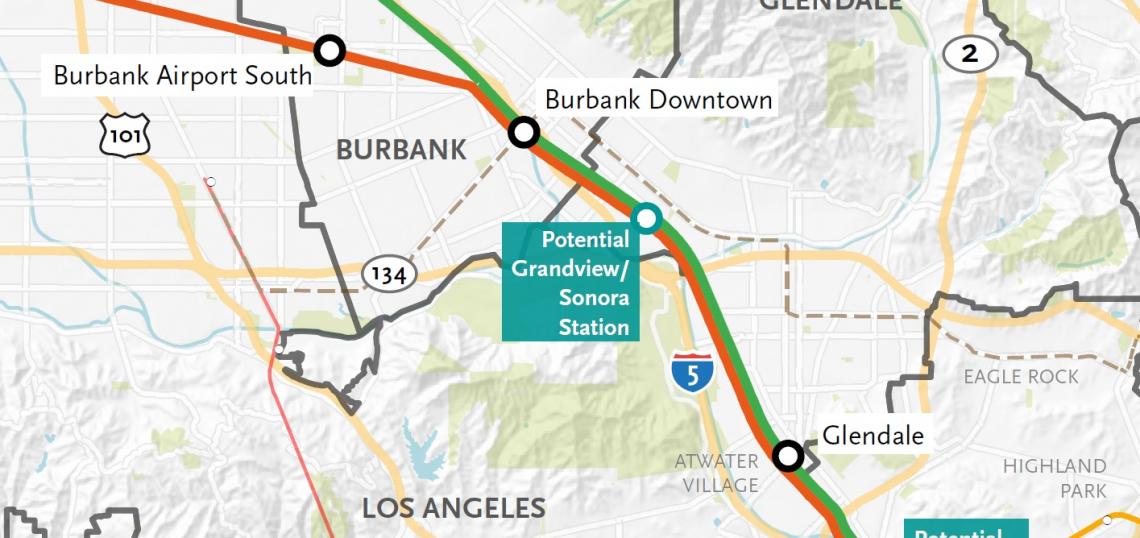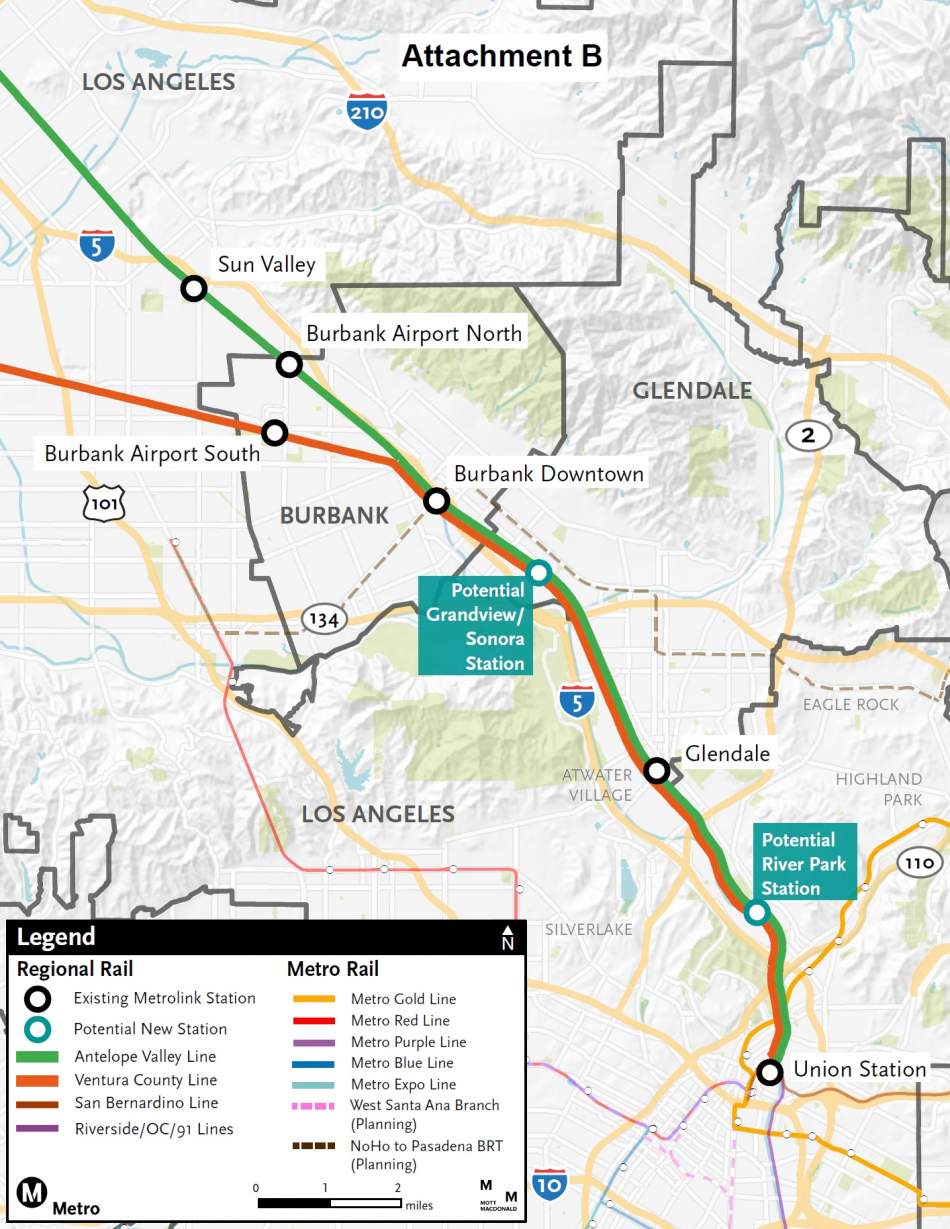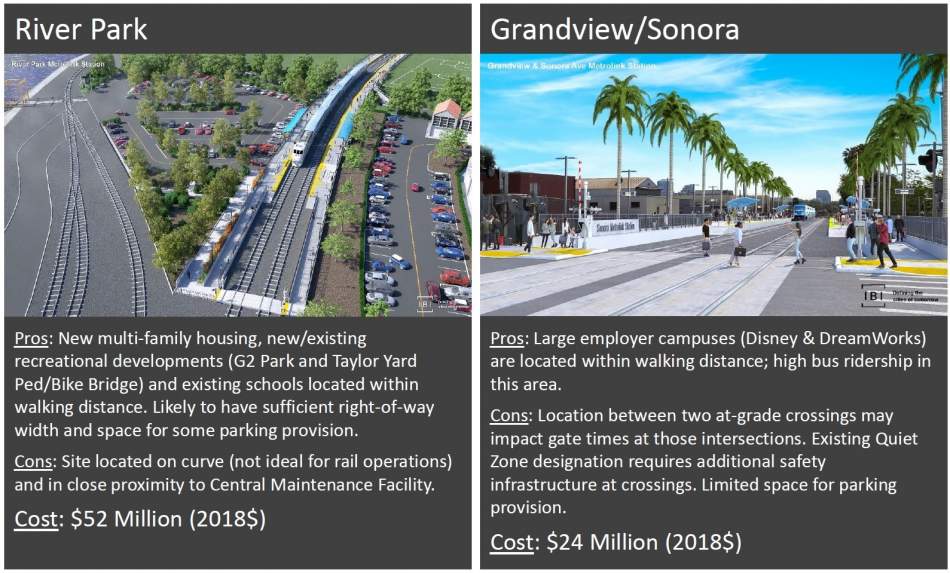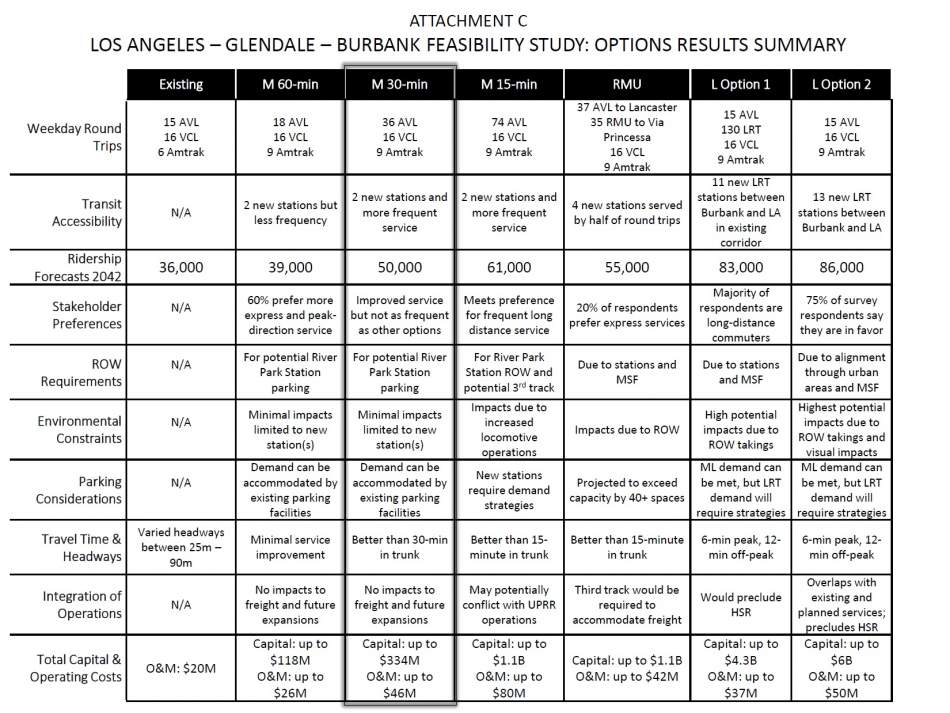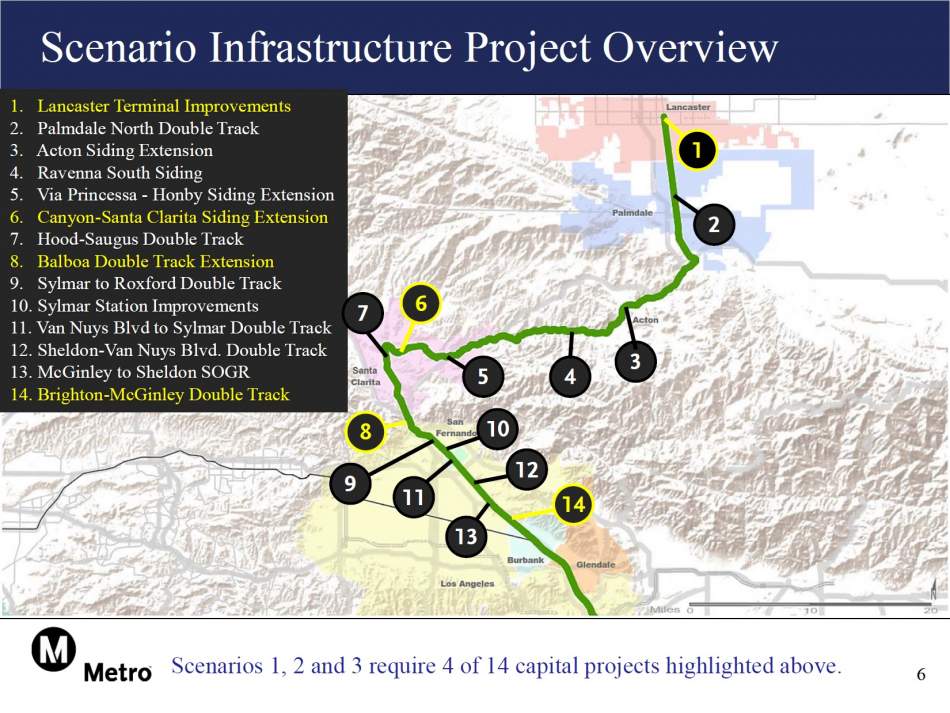A staff report to the Metro Board's Planning and Programming Committee provides recommendations on ways to improve rail transit between Burbank and Downtown Los Angeles.
The report, which was initiated in 2016, examined multiple options for improving service along the corridor - recommends that Metro Board pursue approximately $175 million in improvements to existing commuter rail service in the Los Angeles-Burbank-Glendale corridor, with the aim of adding new infill stations and running Amtrak and Metrolink at minimum 30-minute headways. According to the staff report, the proposed improvements would increase the number of weekday round trips on the corridor by 64 percent - growing from 37 trips in 2019 to 61 trips upon completion - and attract approximately 22,000 daily riders by 2028 and 40,000 daily riders by 2042.
Additionally two infill Metrolink stations could be built along the corridor, including a stop at the intersection of Grandview and Sonora in Glendale and a "River Park" station adjacent to the Taylor Yard in Glassell Park. Those stations would cost approximately $24 million and $52 million respectively.
Metro staff also studied the possibility of more frequent Metrolink service and the use of rail multiple units within the corridor, but recommended against pursuing those alternatives as they would require additional right-of-way aquisition and could conflict with freight rail operations. Those options would attract more riders - upwards of 60,000 - but at a price tage of approximately $850 million.
Consequently, staff framed the more modest proposal for 30-minute service intervals as providing the "best bang for the buck."
Cost and potential conflicts with proposed high-speed rail service also ruled out light rail service along the corridor. Though light rail between Burbank, Glendale, and Downtown would attract upwards of 86,000 daily riders, the capital costs of such a project could range as high as $6 billion.
The Planning and Programming Committee also received a staff report on potential upgrades to Metrolink's Antelope Valley Line, which shares the Los Angeles-Burbank-Glendale corridor with Amtrak trains and the Ventura County Line. The study concluded that a sequence of phased improvements could gradually increase service between Downtown Los Angeles and Lancaster, starting with the addition of new late evening and off-peak trains over the next decade, and improved peak service and semi-hourly off-peak service over the next 20 years. This would include trains running every 30 minutes as far as Santa Clarita, and every hour to Lancaster, though more ambitious improvements to create semi-hourly service and express service are not given firm timelines.
The staff report identifies 14 projects - including new segments of double-track and extensions of existing sidings - which would be needed facilitate higher-frequency service. The total price tag, an estimated $175 million over a period of 20 years, does not have an identified source of funding at this point in time.
Staff described the Antelope Valley Line projects as congruent with planned improvements under Metrolink's SCORE program, which envisions higher-frequency service and partial electrification along the entire 538-mile system.
Both items were moved forward to the full Metro Board for consideration.
- Los Angeles-Glendale-Burbank Feasibility Study (Urbanize LA)
- Metro Board Members Look to Speed Antelope Valley Line (Urbanize LA)




